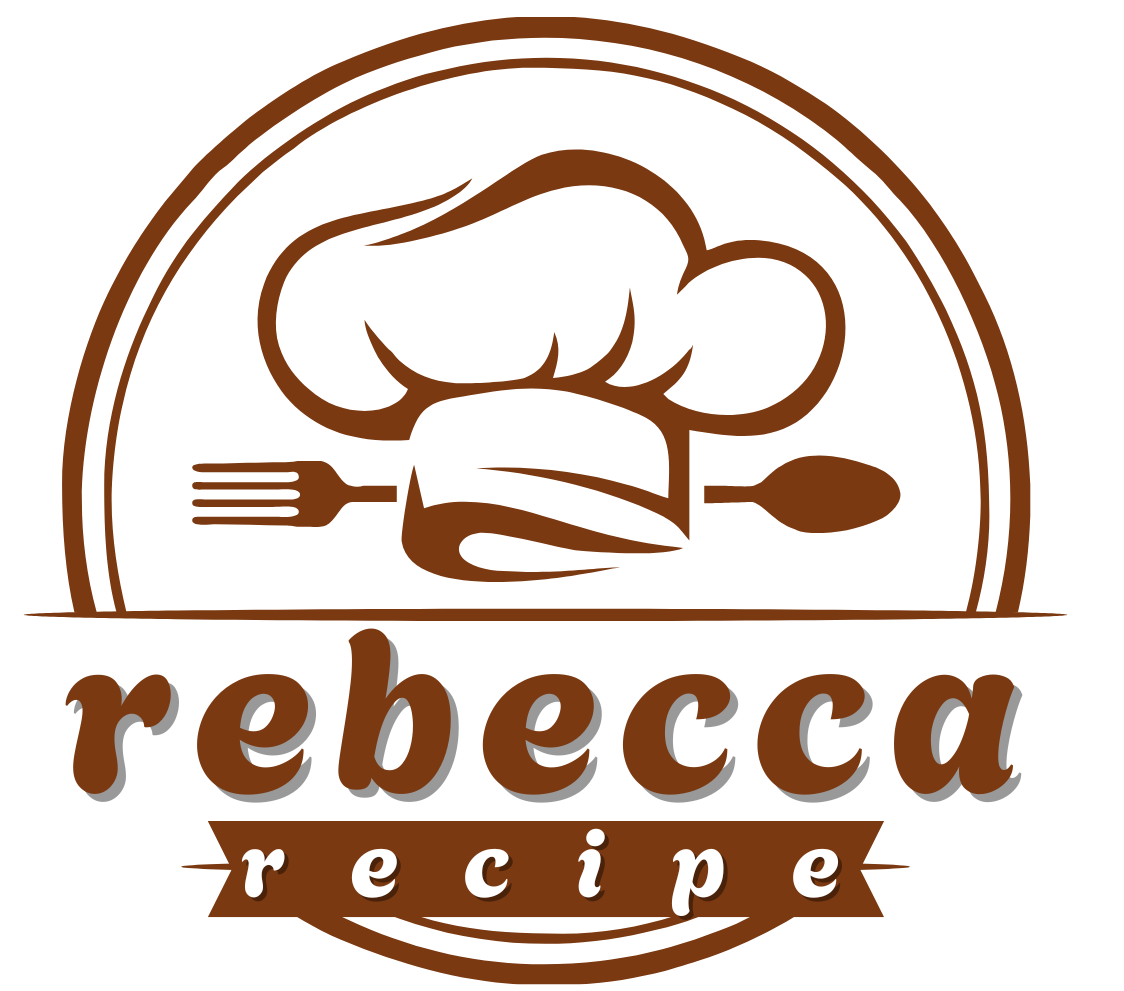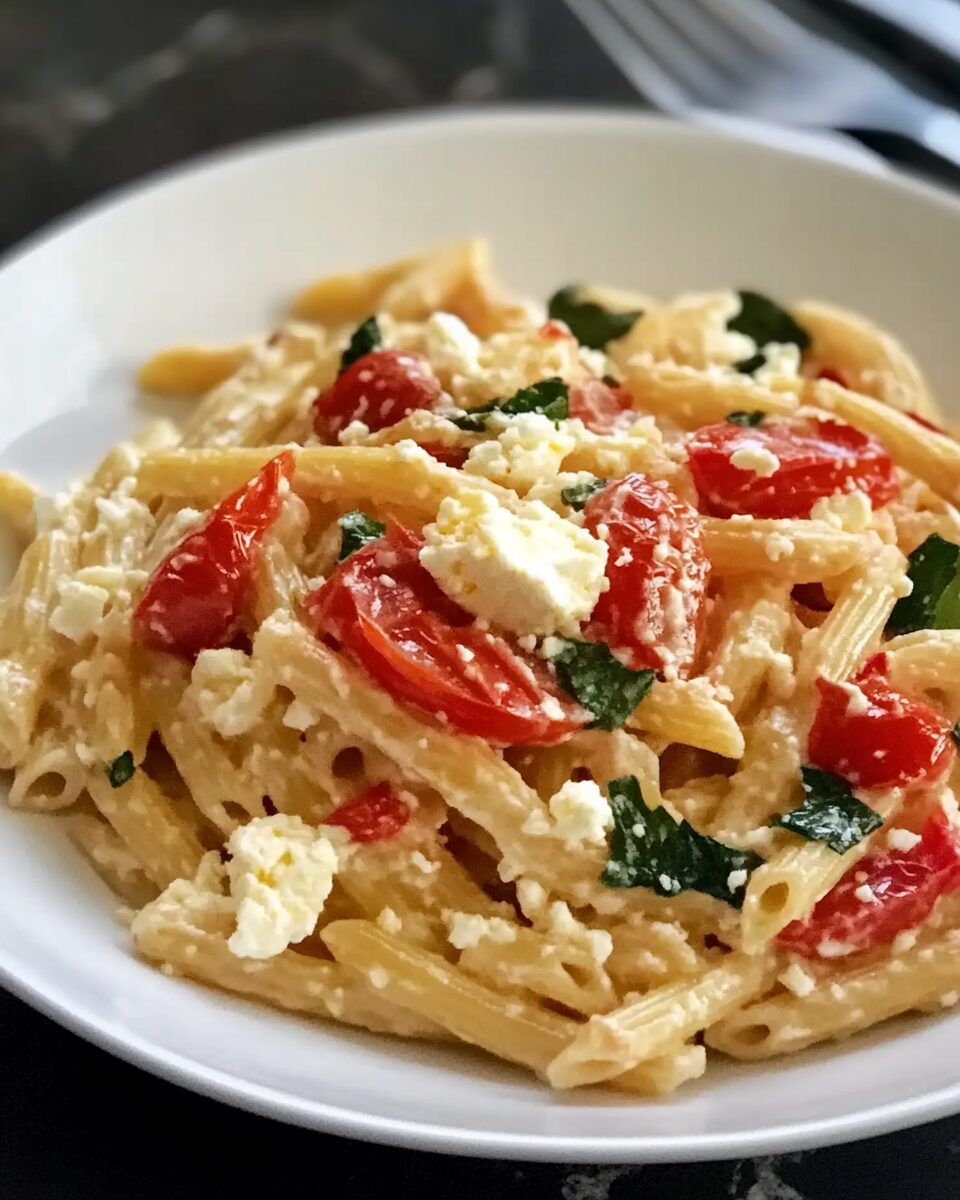Baked Feta Pasta is a simple yet flavorful dish that gained widespread popularity through social media platforms. The recipe involves baking a block of feta cheese with cherry tomatoes, garlic, and seasonings until softened and slightly caramelized. The mixture is then combined with cooked pasta and fresh spinach, resulting in a creamy and savory meal that’s both easy to prepare and delicious.
Full Recipe:
Ingredients
2 pints cherry tomatoes
½ cup sliced red bell pepper
½ cup sliced red onion
½ cup olive oil
4 cloves peeled garlic
2 tablespoons freshly squeezed lemon juice
1 tablespoon lemon zest
½ teaspoon red pepper flakes
½ teaspoon freshly ground black pepper
½ teaspoon Italian seasoning
½ teaspoon dried basil
¼ teaspoon sea salt
1 (8-ounce) block feta cheese
1 (12-ounce) package penne pasta
1 cup baby spinach
Directions
- Preheat the oven to 400 degrees F (200 degrees C).
- Combine cherry tomatoes, bell pepper, onion, olive oil, garlic, lemon juice, lemon zest, red pepper flakes, black pepper, Italian seasoning, basil, and sea salt in a 13×9-inch baking dish.
- Make room in the middle of the pan and add the block of feta cheese. Flip in oil, ensuring the cheese remains intact and becomes well coated.
- Bake in the preheated oven until the cherry tomatoes begin to blister and split, 40 to 45 minutes.
- Meanwhile, bring a large pot of lightly salted water to a boil. Add penne and cook, stirring occasionally, until tender yet firm to the bite, about 11 minutes. Drain and reserve about 1 cup of the pasta water.
- Remove the feta-tomato mixture from the oven. Mash garlic, tomatoes, onions, and peppers with a heavy spoon and mix with the feta cheese, creating a sauce. Stir in spinach and cooked pasta. The spinach will wilt from the heat of the pasta and sauce. Add pasta water, a little at a time if needed, to reach the desired consistency. Mix well and serve.
Nutrients
Per serving (6 servings total):
Calories: 385
Total Fat: 27g
Saturated Fat: 8g
Cholesterol: 34mg
Sodium: 451mg
Total Carbohydrates: 27g
Dietary Fiber: 4g
Total Sugars: 6g
Protein: 10g
Vitamin C: 28mg
Calcium: 225mg
Iron: 2mg
Potassium: 390mg
The Story Behind the Viral Dish
The origins of Baked Feta Pasta can be traced back to Finland, where the dish was known as “Uunifetapasta.” A Finnish food blogger shared the original recipe, and it quickly gained traction due to its simplicity and flavor. The real viral moment came when it was shared on platforms like TikTok and Instagram, with food influencers showcasing the ease of tossing a few ingredients into a baking dish and ending up with a creamy, flavor-packed pasta dish.
What made the dish go viral wasn’t just the taste—it was the visual appeal. The sight of blistered tomatoes and a bubbling, golden-brown block of feta being mashed together into a rich sauce was irresistible to viewers. In a world where food presentation matters as much as flavor, Baked Feta Pasta checked every box.
Flavor Profile and Culinary Appeal
The success of this dish lies in its contrasting yet complementary flavors and textures. Cherry tomatoes provide a natural sweetness and acidity that balance the salty, tangy richness of feta cheese. When roasted, the tomatoes burst open and caramelize slightly, intensifying their flavor. The feta softens into a creamy, slightly grainy sauce that pairs beautifully with the tomatoes.
The addition of olive oil, garlic, and herbs enhances the base, while the cooked pasta absorbs the sauce, resulting in a perfectly coated, savory dish. Fresh elements like spinach or basil add brightness and balance, preventing the dish from becoming too heavy. A squeeze of lemon juice or zest can also elevate the flavors, adding a citrusy pop that cuts through the richness.
What makes Baked Feta Pasta even more appealing is its flexibility. It welcomes variation—extra vegetables, different pasta shapes, and protein add-ins like grilled chicken or shrimp. It adapts to preferences and pantry limitations, making it a reliable option for cooks with varying experience levels.
Cultural Impact and Rise to Fame
In recent years, food trends have been driven not just by celebrity chefs or cookbooks, but by the everyday home cook. Baked Feta Pasta’s viral success is a testament to the power of social media in shaping culinary culture. Food influencers and amateur chefs around the world recreated the dish, often putting their own spin on it and sharing their versions online. Within weeks, grocery stores reported shortages of feta cheese as consumers rushed to try the now-iconic recipe.
This dish also represents a broader shift in how people view cooking. There’s a growing appreciation for recipes that are achievable without being boring. People want meals that are fast, beautiful, and most importantly, satisfying. Baked Feta Pasta fits squarely into this new era of home cooking—accessible yet elevated, social media-friendly, and deeply comforting.
Nutrition and Health Considerations
From a nutritional standpoint, Baked Feta Pasta can be part of a balanced diet when prepared with mindfulness. Feta cheese is rich in calcium and protein but also contains a significant amount of sodium and saturated fat. To lighten the dish, many cooks opt for whole wheat or legume-based pasta, which adds fiber and protein. Incorporating vegetables like spinach, kale, zucchini, or even roasted broccoli can also boost the nutrient profile.
For those watching sodium intake, a reduced-sodium feta or a mix of feta and ricotta can help lower salt content. Similarly, adjusting the amount of olive oil or using a light cooking spray instead can cut down on calories from fat without sacrificing too much flavor.
Those following plant-based diets have found success using vegan feta alternatives, and gluten-free pastas allow those with sensitivities or allergies to enjoy the dish as well. The adaptability of Baked Feta Pasta means it can be made to suit a wide range of dietary needs and preferences.
Why It Works: The Science of Simplicity
At its core, Baked Feta Pasta is a lesson in culinary science. The success of the dish isn’t just luck—it’s a result of how certain ingredients interact under heat. Feta cheese doesn’t melt in the same way as mozzarella or cheddar; instead, it breaks down into a creamy, emulsified texture when combined with moisture and fat. The water content from the tomatoes, the oil, and the starch from the pasta all help create a sauce that feels rich without needing cream or butter.
Roasting the tomatoes and garlic intensifies their natural sugars, deepening the flavor of the sauce. Herbs like oregano, thyme, or basil bring in aromatic oils that infuse the dish as it bakes. When all these elements are combined, the result is a flavorful, balanced, and texturally pleasing pasta dish that feels indulgent without being overly complicated.
Serving and Presentation Tips
Presentation plays a huge role in the popularity of Baked Feta Pasta. The visual journey from raw ingredients to a golden, bubbling tray is part of the fun. For serving, garnishing with freshly chopped basil, a drizzle of olive oil, or even chili flakes can elevate the final dish. Some prefer to add a grating of Parmesan or Pecorino Romano for a touch of umami.
This dish pairs well with a light side salad featuring lemon vinaigrette, crusty bread for scooping up the sauce, or roasted vegetables for a more complete meal. A glass of crisp white wine or sparkling water with citrus complements the tangy flavor of the feta beautifully.
Baked Feta Pasta also stores well and can be enjoyed as leftovers, making it an excellent option for meal prepping. Reheating is best done gently, with a splash of pasta water or a touch of olive oil to revive the sauce’s texture.
Tips for Customization and Upgrades
While the classic version of Baked Feta Pasta is undeniably delicious, it’s also a blank canvas for customization. Here are a few popular ways to personalize the dish:
-
Add Protein: Grilled chicken, sautéed shrimp, or even crispy chickpeas can boost the protein content and make it a more filling meal.
-
Boost the Veggies: Roasted mushrooms, zucchini, eggplant, or bell peppers add color, texture, and nutrients.
-
Switch the Cheese: Goat cheese, ricotta, or burrata can offer a different creamy profile if feta isn’t your favorite.
-
Play with Herbs and Spices: Italian seasoning, smoked paprika, crushed red pepper flakes, or za’atar can bring different global flavors into the dish.
-
Try Different Pasta Shapes: While penne and fusilli are common, orzo, rigatoni, or even gnocchi can be used depending on the desired bite and texture.
These options allow the recipe to evolve based on mood, ingredients on hand, or dietary needs, keeping it fresh and interesting no matter how often it’s made.
Why It’s Here to Stay
Unlike many internet food trends that burn bright and fade quickly, Baked Feta Pasta has shown staying power. Its blend of simplicity, flavor, and visual appeal makes it more than just a fad. It taps into what modern cooks value most: ease, taste, and the joy of creating something beautiful.
Its ingredients are readily available and affordable, and the recipe invites experimentation. It’s a dish that children love and adults appreciate for its depth. It feels indulgent but not over-the-top, making it suitable for weeknight dinners, date nights, and gatherings alike.
Moreover, Baked Feta Pasta fosters creativity. It empowers home cooks to feel like chefs, and with each variation, it becomes uniquely theirs. It’s comfort food with a modern twist—satisfying both the stomach and the spirit.
Conclusion
Baked Feta Pasta is more than just a viral recipe; it’s a symbol of a larger movement in home cooking—one that prioritizes joy, flavor, and simplicity. In just one baking dish, this recipe brings together a beautiful combination of textures, flavors, and aromas that feel indulgent yet approachable. Its widespread appeal lies in how effortlessly it comes together while delivering maximum impact. With endless possibilities for customization and adaptation, it’s no surprise that this dish has cemented its place in countless kitchens around the world.






